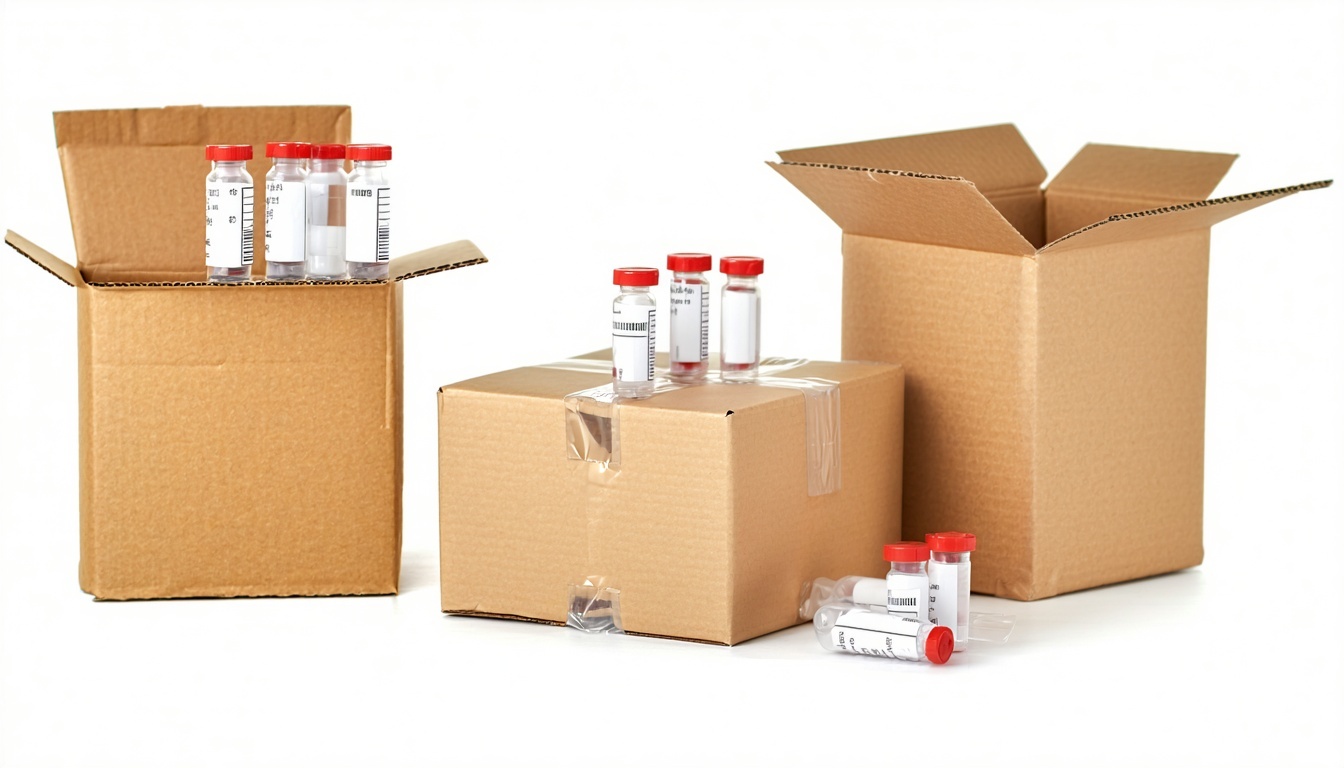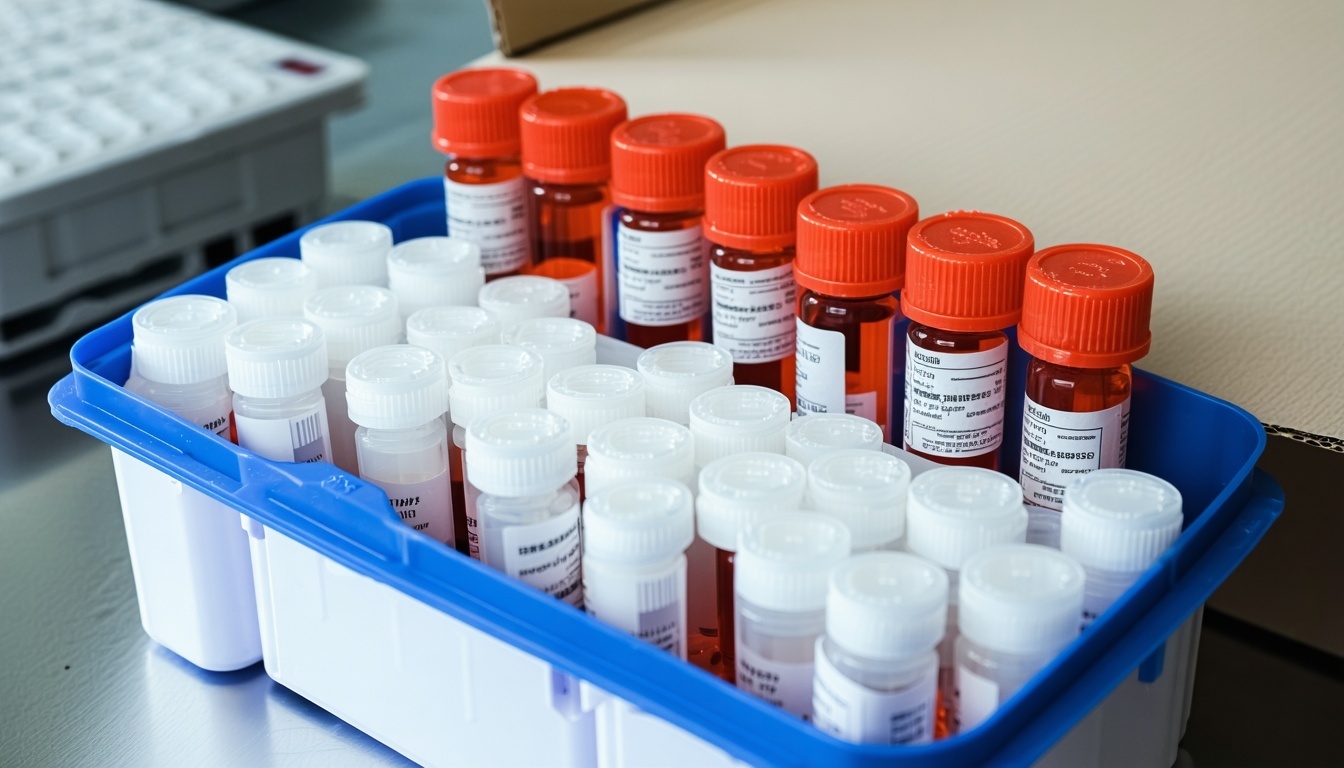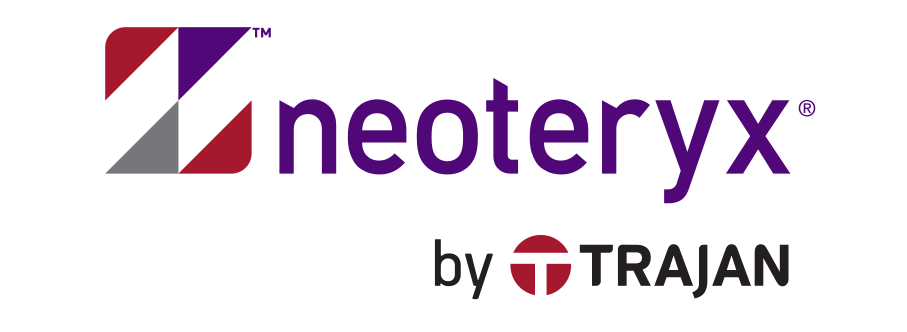Share this
reducing the cost of shipping blood samples: strategies, guidelines, and solutions
by Neoteryx Microsampling on Feb 22, 2017 8:59:00 AM
 In healthcare and clinical research, transporting blood samples from the point of collection to analytical laboratories can be both logistically challenging and financially burdensome.
In healthcare and clinical research, transporting blood samples from the point of collection to analytical laboratories can be both logistically challenging and financially burdensome.
As studies expand and decentralized or remote clinical trials become more prevalent, the costs associated with sample transportation can increase rapidly.
From the moment liquid blood samples are collected from a patient or study subject, the samples must be packaged, stored, and shipped in a cold environment to prevent the development of bacteria.Liquid ("wet") blood samples must be refrigerated at specific temperatures to remain viable. The current standard for handling frozen plasma is to pack it with dry ice in specialized insulated containers.
Because blood samples may be infectious, packaging of liquid blood samples must conform to international standards.
Fortunately, a methodological shift—such as adopting microsampling and dried blood sample technologies—can help streamline operations and significantly reduce expenses.
Understand Packaging/Transport Guidelines for Blood Samples

The cost of blood sample shipping containers must be considered and calculated from a clinical perspective. The high cost of cold shipping biological samples can increase the overall costs of a clinical trial or other research study.
To eliminate the potential for contamination, the integrity of liquid blood samples must be maintained. Liquid blood samples transported from the sampling location to a laboratory for processing and analysis are very sensitive to temperature fluctuations and must be frozen as quickly as possible.
Since dry ice and protective packaging add significantly to the weight of each shipment, the cost to transport increases accordingly. Moreover, because of the limited effectiveness of dry ice and to reduce excess handling, priority overnight shipping is the usual method of transport and delivery.
Regardless of format, blood samples—particularly liquid ones—must be packaged following strict international and carrier-specific regulations.
The High Cost of Shipping Frozen Blood Samples

The cost of blood sample shipping containers must be considered and calculated from a clinical perspective.
A study performed by bioMontr in 2012 showed the average cost of shipping 1 ml of frozen blood samples by FedEx Overnight Priority from Georgia to California, Massachusetts, District of Columbia, Illinois, and Colorado was $178.62.
The cost of international sample shipments to China, India, United Kingdom, and Brazil averaged $482.51.
Unfortunately, while many budget-strapped researchers would welcome the opportunity to reduce the cost of shipping frozen blood samples, the fact remains that liquid blood samples require cold chain shipping to protect the specimens from excessive exposure.
Shipping Blood Samples FedEx: What You Need to Know
FedEx and other carriers mandate the correct labeling and handling of specimens containing infectious substances or those shipped with dry ice.
If dry ice is used, it must be placed between the secondary and outer container and the package must be properly labeled with hazard symbols and vented to prevent pressure build-up.
- UN Guidelines: The United Nations has established protocols for packaging biological materials to prevent leakage, breakage, or contamination during transport.
- FedEx Regulations: When shipping blood samples via FedEx, especially frozen samples, the primary container must be watertight and securely sealed. This container must then be enclosed within a secondary leakproof container (such as a plastic screw-top canister or sealed bag), surrounded by absorbent material to cushion against shock or leakage.
In contrast, dried blood samples collected with Mitra devices can usually be shipped without dry ice and in standard envelopes, significantly reducing time, labor, and materials required for shipping compliance.
Advantages of Microsampling in Shipping Logistics
- Reduces dependency on cold-chain infrastructure.
- Avoids classification as hazardous material.
- Enables cost-effective global sample transport.
- Offers longer sample stability during transit.
Microsampling as a Cost-Effective Alternative
Microsampling devices, such as the Mitra® device that utilizes VAMS® technology, enable the collection of small, precise blood samples that dry quickly.
A microsample can be shipped in a sealed foil specimen bag. Including a packet of desiccant inside the specimen bag with the samples is recommended to help keep them dry during transit. The specimen bag can be placed inside a secondary watertight mailing envelope for additional protection.
These dried samples eliminate the need for refrigeration or dry ice, allowing them to be shipped as non-hazardous materials through standard postal or courier services. As a result, packaging and transportation costs are significantly reduced.
In contrast, traditional phlebotomy blood draws involve tubes of liquid blood that require refrigeration or freezing, necessitating insulated containers and dry ice for shipping. Dried microsamples, on the other hand, are stable at ambient temperatures and can be conveniently mailed in standard padded envelopes.
Calculate the Savings from Shipping Dried Microsamples
Dried blood microsamples can be shipped in ambient temperatures without harm.
The study by bioMontr also identified the FedEx Priority Shipping costs for shipments of dried blood spot (DBS) cards and other microsampling technologies.
For those U.S. destinations, the average shipping cost per package was $11.20; the average shipment to the international destinations was $113.34.
Shipping dried blood versus frozen blood samples saved 94% for domestic shipping and 77% to/from international destinations.
Dried Blood Samples Save Time and Money

The cost of a single clinical trial for drug development is estimated to be roughly $2.6 billion. As research and medical costs continue to rise globally, researchers and clinical trial sponsors are actively seeking ways to reduce costs.
Being able to ship blood and store blood samples with fewer handling requirements is a huge benefit to the shipment of blood samples.
The millions of dollars saved by implementing remote specimen collection and dried blood sampling can reallocated toward other needs within a research study or clinical trial.
For many studies that utilize dried blood microsampling, study participants can use microsampling devices to self-collect blood samples at home. They place their samples inside the provided packaging to mail their samples to the lab from the nearest mailbox.
Lower Costs with Dried Capillary Blood Sampling
Shipping blood samples for lab analysis doesn’t have to be expensive or complicated. With microsampling innovations, researchers and clinicians can reduce overhead, maintain sample integrity, and ensure compliance—all while making sample collection more patient-friendly.
- Transitioning to dried blood microsampling represents a sustainable and cost-efficient shift in clinical workflows.
- The packaging and shipment of dried blood microsamples are far simpler than transporting liquid blood samples.

Image Credits: Shutterstock, Trajan, Neoteryx
Share this
- Microsampling (206)
- Research, Remote Research (119)
- Venipuncture Alternative (105)
- Clinical Trials, Clinical Research (83)
- Mitra® Device (73)
- Therapeutic Drug Monitoring, TDM (51)
- Dried Blood Spot, DBS (39)
- Biomonitoring, Health, Wellness (30)
- Infectious Disease, Vaccines, COVID-19 (24)
- Blood Microsampling, Serology (23)
- Omics, Multi-Omics (21)
- Decentralized Clinical Trial (DCT) (20)
- Specimen Collection (18)
- Toxicology, Doping, Drug/Alcohol Monitoring, PEth (17)
- Skin Microsampling, Microbiopsy (14)
- hemaPEN® Device (13)
- Preclinical Research, Animal Studies (12)
- Pharmaceuticals, Drug Development (9)
- Harpera Device (7)
- Industry News, Microsampling News (5)
- Antibodies, MAbs (3)
- Company Press Release, Product Press Release (3)
- Environmental Toxins, Exposures (1)
- July 2025 (1)
- May 2025 (1)
- April 2025 (2)
- December 2024 (2)
- November 2024 (1)
- October 2024 (3)
- September 2024 (1)
- June 2024 (1)
- May 2024 (1)
- April 2024 (4)
- March 2024 (1)
- February 2024 (2)
- January 2024 (4)
- December 2023 (3)
- November 2023 (3)
- October 2023 (3)
- September 2023 (3)
- July 2023 (3)
- June 2023 (2)
- April 2023 (2)
- March 2023 (2)
- February 2023 (2)
- January 2023 (3)
- December 2022 (2)
- November 2022 (3)
- October 2022 (4)
- September 2022 (3)
- August 2022 (5)
- July 2022 (2)
- June 2022 (2)
- May 2022 (4)
- April 2022 (3)
- March 2022 (3)
- February 2022 (4)
- January 2022 (5)
- December 2021 (3)
- November 2021 (5)
- October 2021 (3)
- September 2021 (3)
- August 2021 (4)
- July 2021 (4)
- June 2021 (4)
- May 2021 (4)
- April 2021 (3)
- March 2021 (5)
- February 2021 (4)
- January 2021 (4)
- December 2020 (3)
- November 2020 (5)
- October 2020 (4)
- September 2020 (3)
- August 2020 (3)
- July 2020 (6)
- June 2020 (4)
- May 2020 (4)
- April 2020 (3)
- March 2020 (6)
- February 2020 (3)
- January 2020 (4)
- December 2019 (5)
- November 2019 (4)
- October 2019 (2)
- September 2019 (4)
- August 2019 (4)
- July 2019 (3)
- June 2019 (7)
- May 2019 (6)
- April 2019 (5)
- March 2019 (6)
- February 2019 (5)
- January 2019 (8)
- December 2018 (3)
- November 2018 (4)
- October 2018 (7)
- September 2018 (6)
- August 2018 (5)
- July 2018 (8)
- June 2018 (6)
- May 2018 (5)
- April 2018 (6)
- March 2018 (4)
- February 2018 (6)
- January 2018 (4)
- December 2017 (2)
- November 2017 (3)
- October 2017 (2)
- September 2017 (4)
- August 2017 (2)
- July 2017 (4)
- June 2017 (5)
- May 2017 (6)
- April 2017 (6)
- March 2017 (5)
- February 2017 (4)
- January 2017 (1)
- July 2016 (3)
- May 2016 (1)
- April 2016 (2)



Comments (2)